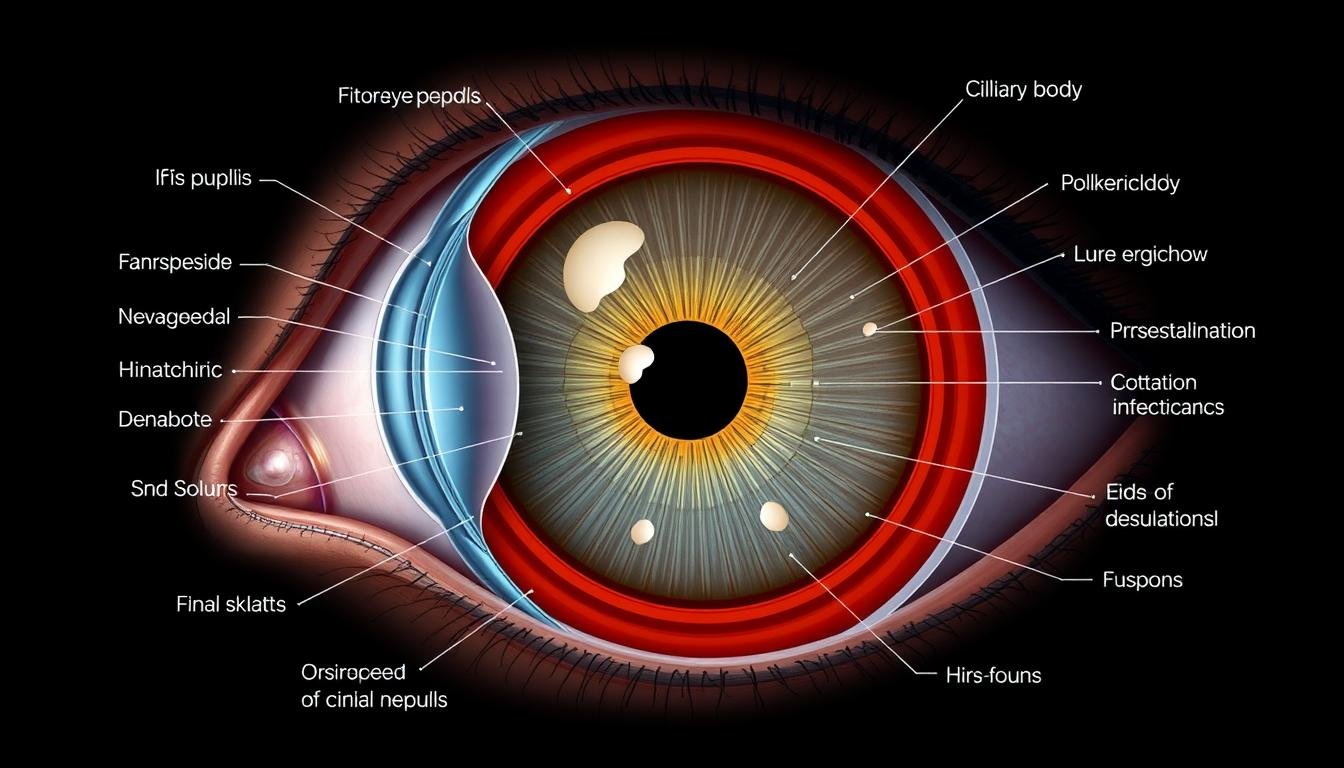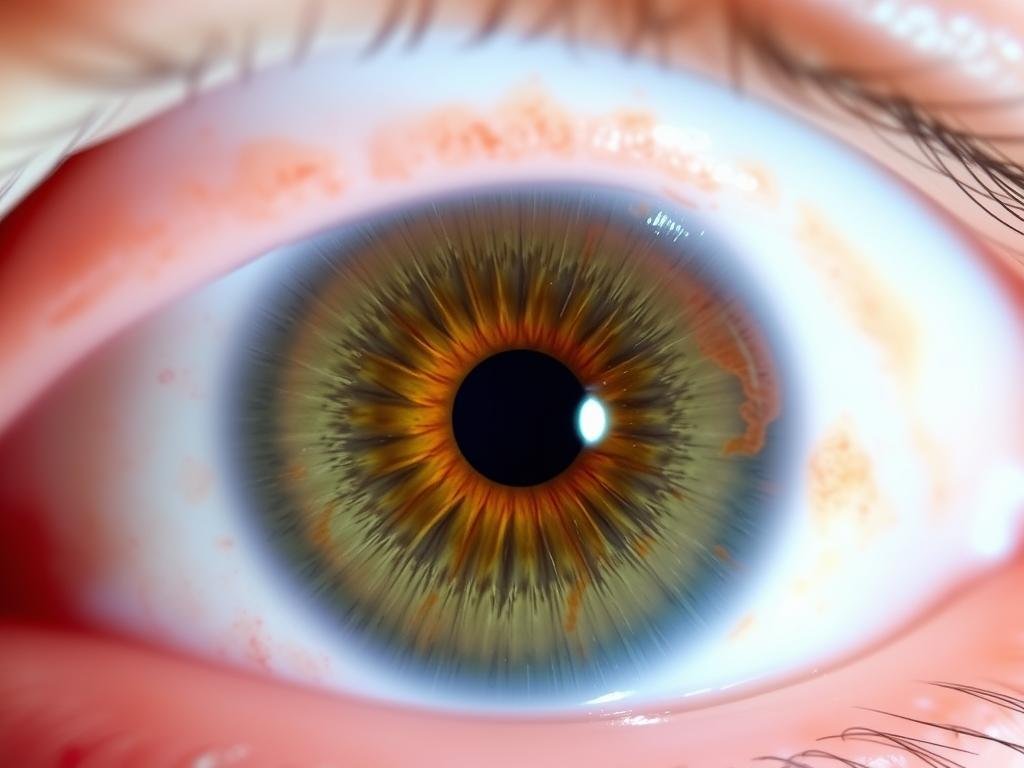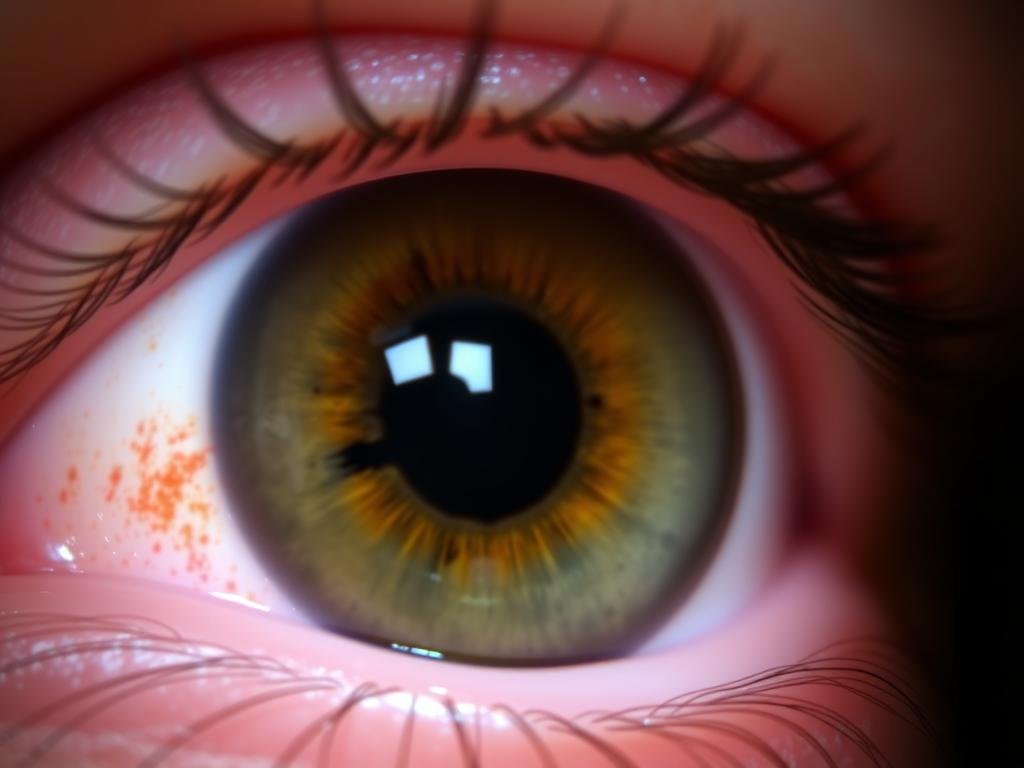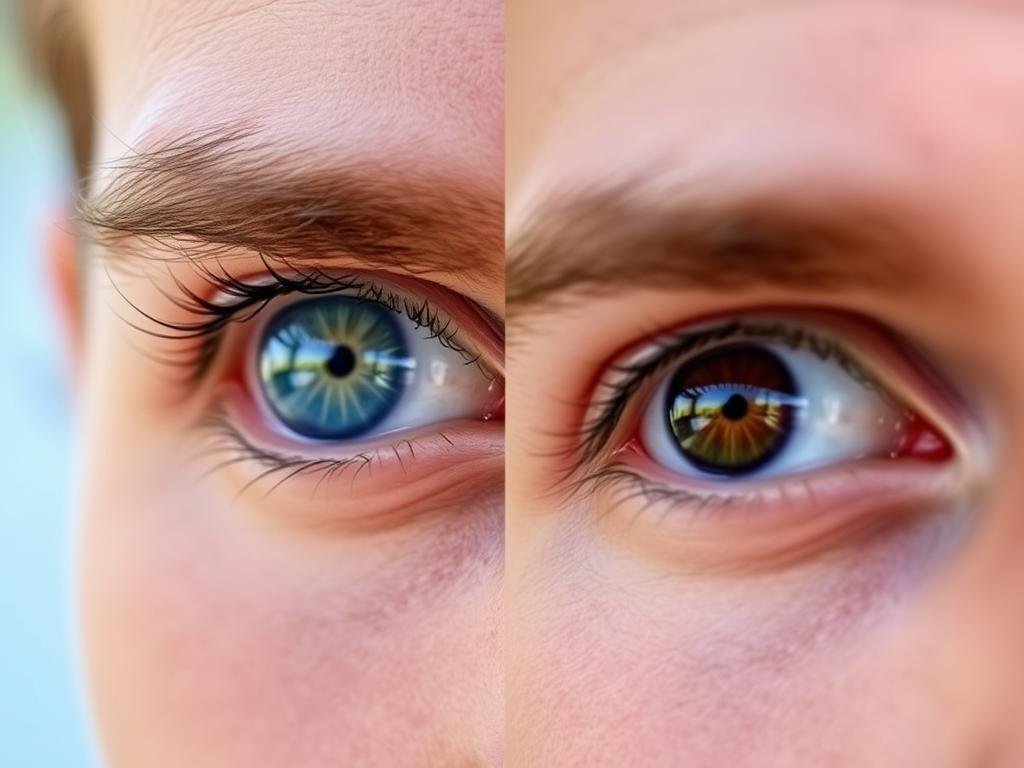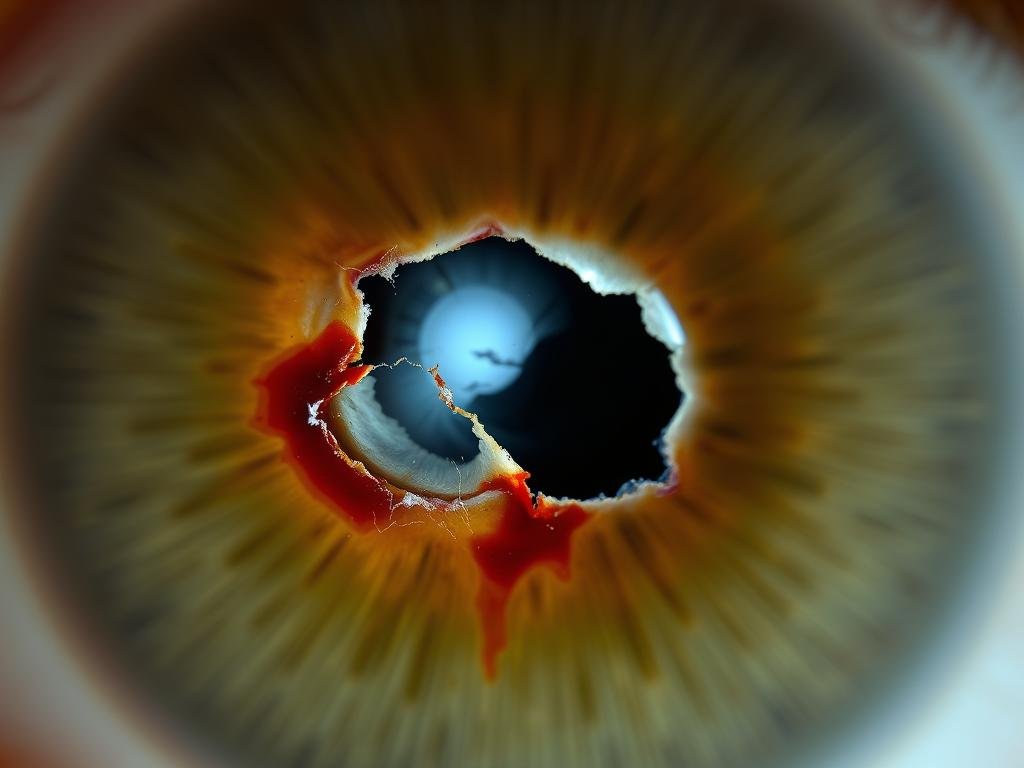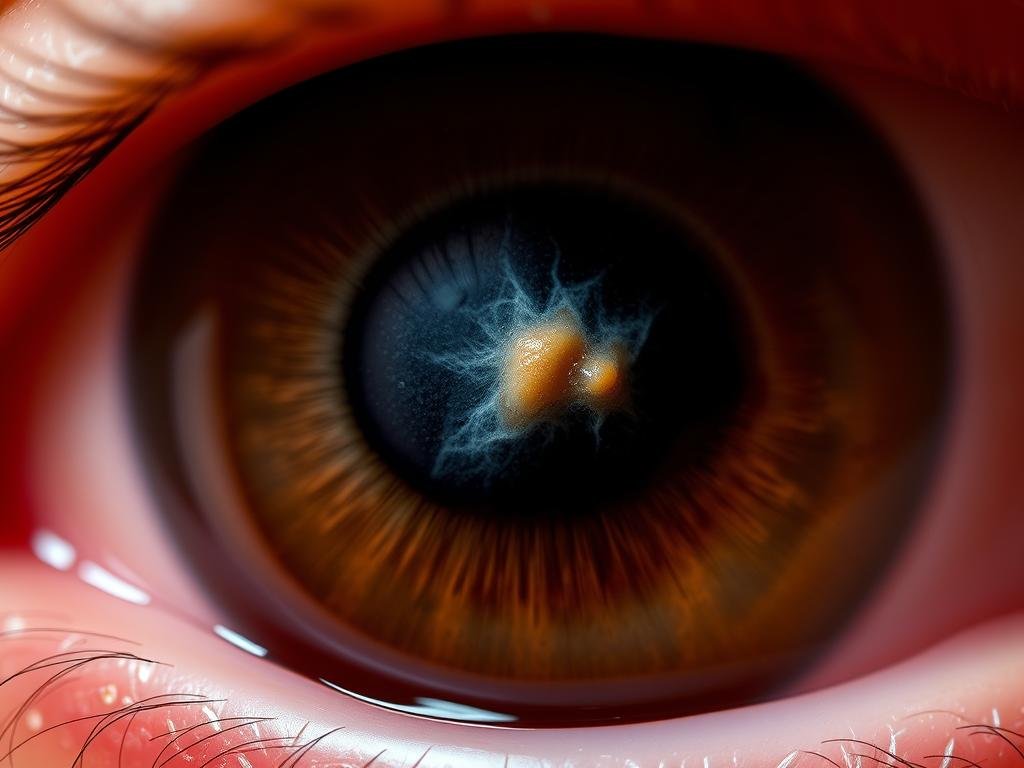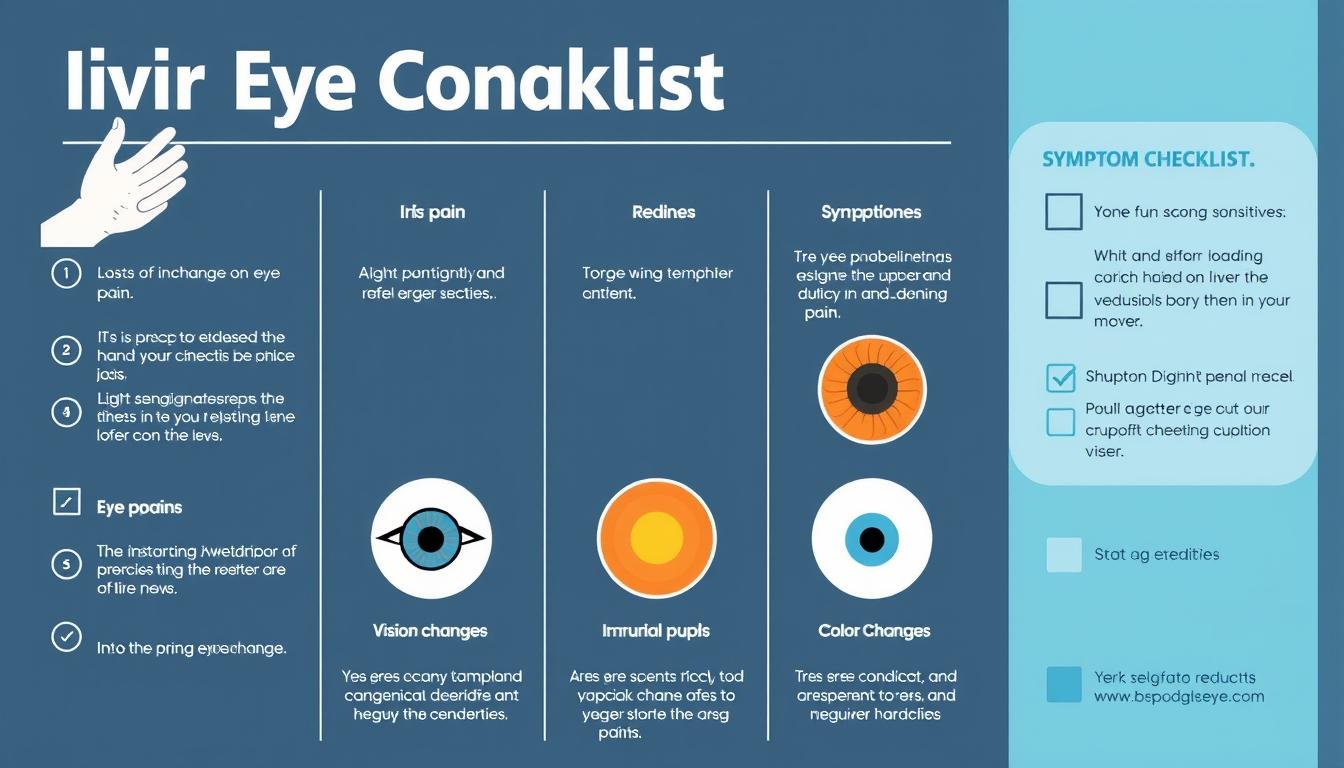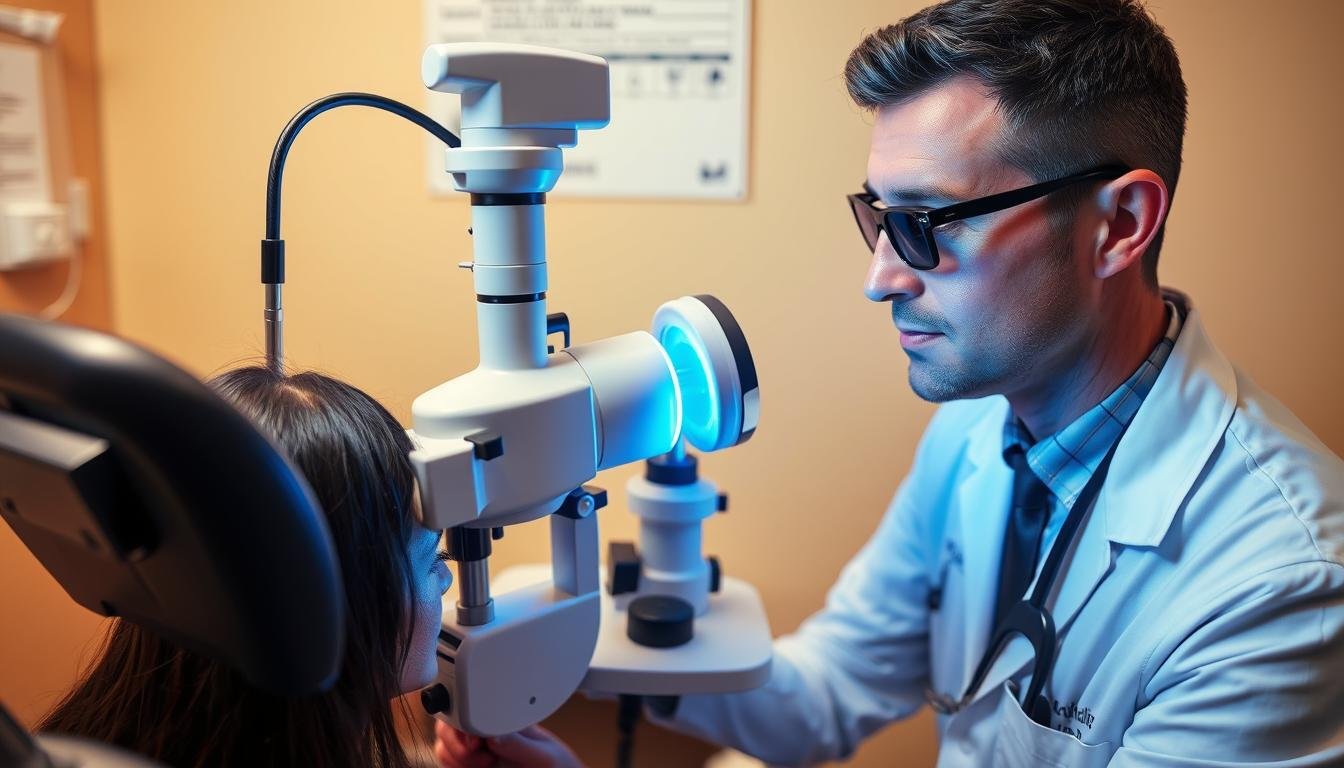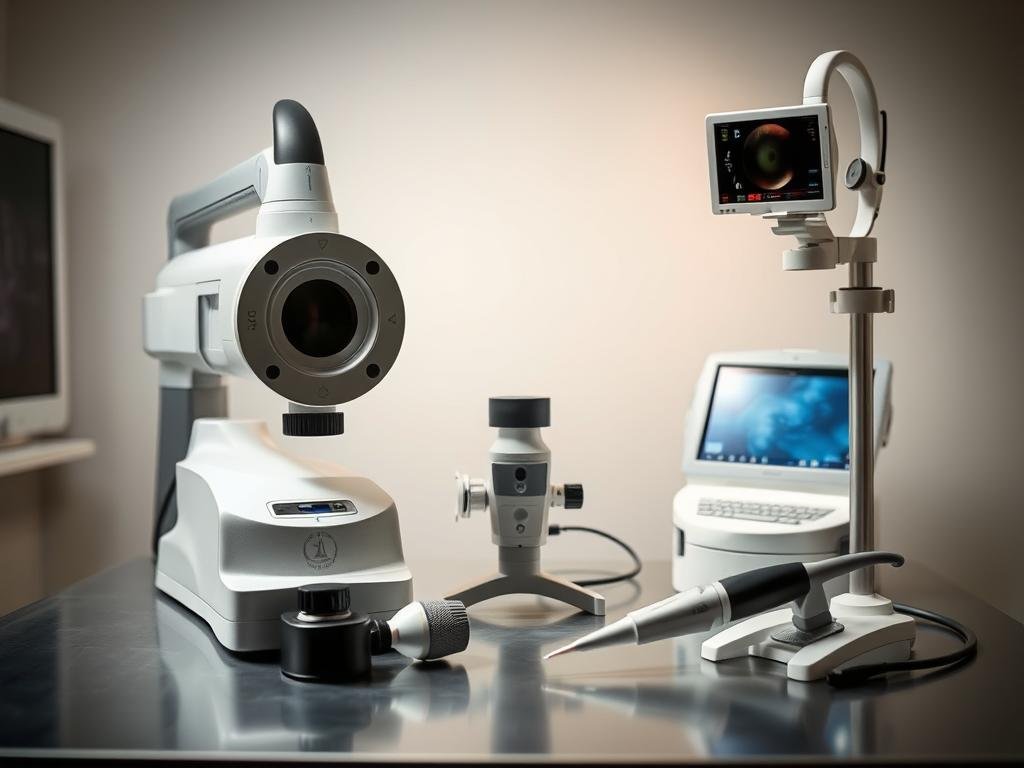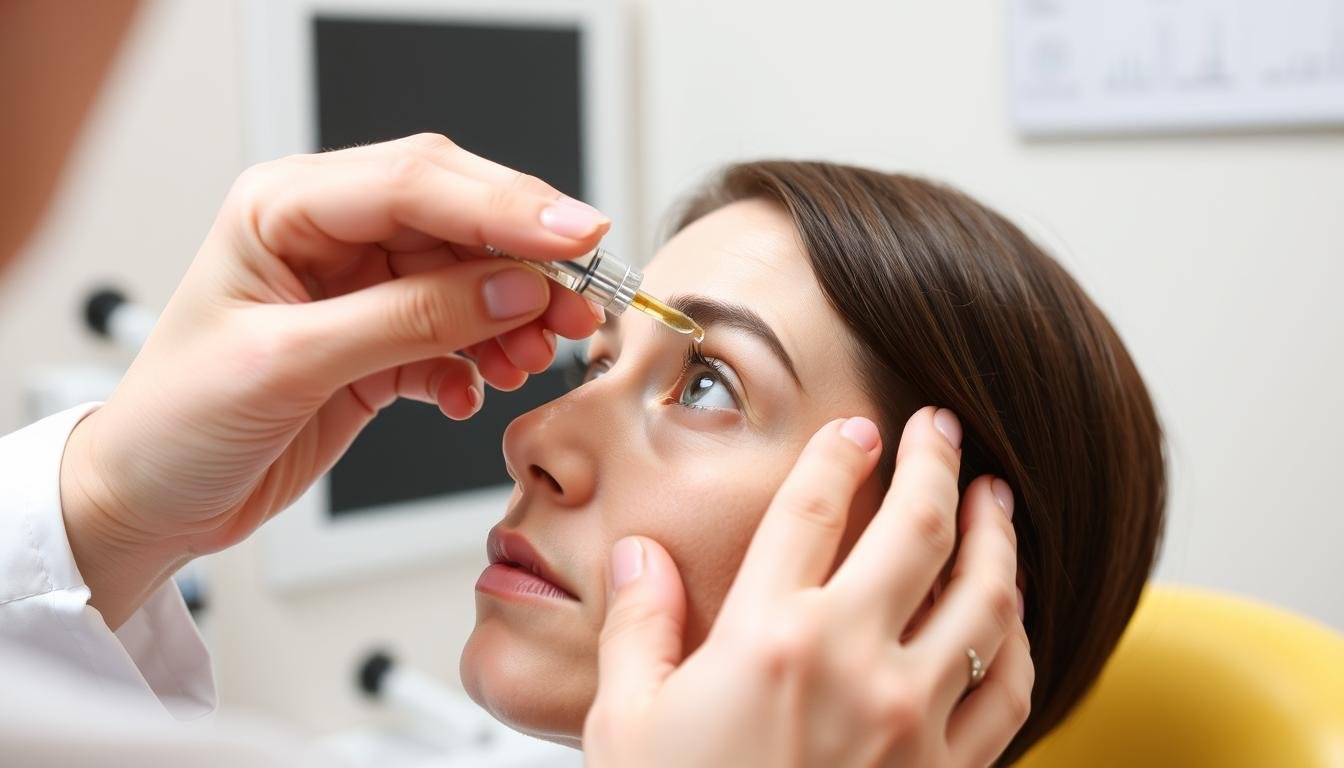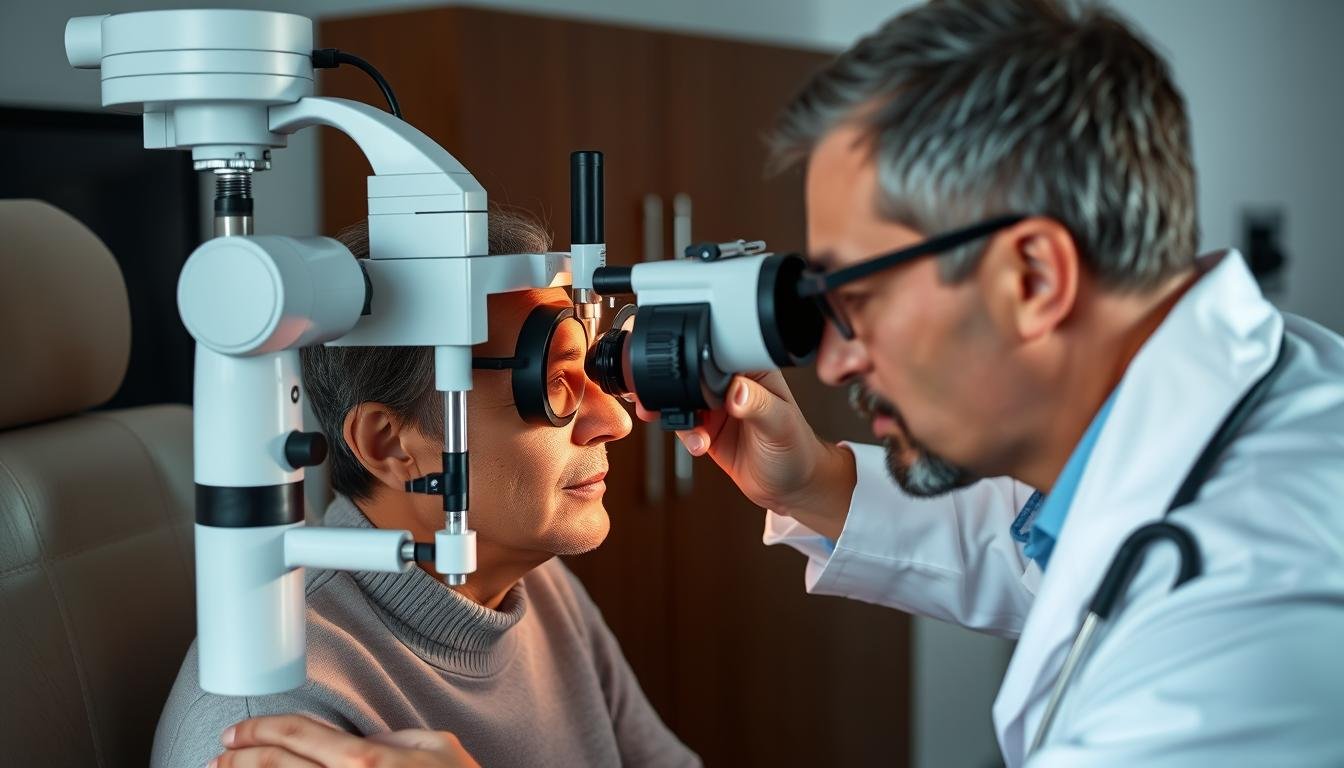Iris Eye Conditions:The iris, the colored part of your eye, plays a crucial role in vision by controlling how much light enters your eye. When iris-related conditions develop, they can cause discomfort, vision changes, and in some cases, serious complications. Understanding these conditions is the first step toward maintaining your ocular health and preserving your vision for years to come.Iris Anatomy and Function

The iris is located between the cornea and lens, controlling light entry through the pupil
The iris is a thin, circular structure surrounding the pupil at the center of your eye. Located under the cornea and on top of the lens, it’s divided into two main zones: the pupillary zone (inner region) and the ciliary zone (outer region). These zones join at the collarette, which consists of nerves and blood vessels.
Your iris contains muscles that control pupil size through a process called the pupillary light reflex. When you enter a dark environment, these muscles dilate the pupil to allow more light in. In bright conditions, they constrict the pupil to reduce light entry. This automatic adjustment helps maintain optimal vision across varying lighting conditions.
The color of your iris is unique to you, similar to your fingerprint. Eye color depends on the amount of melanin (a natural pigment) in your iris and is determined by genetics. The iris not only gives your eyes their distinctive color but also plays a vital role in your visual system.
Common Iris Eye Conditions
Iritis (Anterior Uveitis)
Iritis is inflammation of the iris and is the most common form of anterior uveitis. This condition can develop suddenly (acute) or persist over time (chronic). Iritis often causes eye pain, redness, light sensitivity, and blurred vision. While the exact cause isn’t always identifiable, it can be associated with autoimmune disorders, infections, or trauma.
Without proper treatment, iritis can lead to complications such as glaucoma, cataracts, or permanent vision loss. Early diagnosis and treatment are essential for preventing these serious outcomes.
Concerned About Eye Inflammation?
If you’re experiencing eye pain, redness, or sensitivity to light, don’t wait for symptoms to worsen. Schedule an eye exam today to protect your vision.
Schedule an Eye Exam
Aniridia
Aniridia is a rare genetic disorder characterized by the partial or complete absence of the iris. This condition is present at birth and affects approximately 1 in 50,000 to 100,000 people worldwide. Because the iris regulates light entry, people with aniridia often experience extreme light sensitivity, poor vision, and may develop other eye problems.
Associated symptoms include nystagmus (involuntary eye movements), strabismus (misaligned eyes), and an increased risk of developing glaucoma, cataracts, and corneal problems. While there’s no cure for aniridia, various treatments can help manage symptoms and preserve vision.
Heterochromia
Heterochromia is a condition where a person has different colored irises or different colored sections within the same iris. This condition can be present at birth (congenital) or develop later in life (acquired). Congenital heterochromia is typically harmless and results from genetic variations affecting melanin production.
Acquired heterochromia, however, may indicate an underlying condition such as Horner’s syndrome, eye injury, certain medications, or inflammatory conditions. While heterochromia itself doesn’t usually affect vision, it’s important to have any sudden changes in iris color evaluated by an eye care specialist.
Iris Trauma
Iris trauma can occur from direct injury to the eye, such as from sports injuries, accidents, or surgical complications. Trauma may cause tears in the iris tissue, abnormal pupil shape (traumatic mydriasis), or even iris detachment. Symptoms often include pain, light sensitivity, blurred vision, and visible deformity of the iris or pupil.
Depending on the severity, iris trauma may require surgical repair. Recent advancements in iris reconstruction techniques (2020-2023) have significantly improved outcomes for patients with traumatic iris defects, including artificial iris implants and suturing techniques that restore both function and appearance.
Iris Tumors
Iris tumors can be benign (non-cancerous) or malignant (cancerous). The most common benign tumors include iris nevi (similar to skin moles) and iris cysts. Malignant tumors include iris melanoma, though this is rare. Many iris tumors are discovered during routine eye exams before they cause symptoms.
When symptoms do occur, they may include a visible growth on the iris, pupil distortion, vision changes, or glaucoma. Treatment depends on the tumor type, size, and growth rate, ranging from monitoring to surgical removal or radiation therapy.
Symptoms Checklist for Iris Issues
Recognizing the symptoms of iris-related conditions early can help prevent complications and vision loss. If you experience any of the following symptoms, consult an eye care specialist promptly:
Physical Symptoms
- Eye pain or discomfort
- Redness around the iris
- Visible changes in iris color or structure
- Irregular pupil shape
- Tearing or discharge
- Swelling of the eye or eyelid
Visual Symptoms
- Blurred or decreased vision
- Light sensitivity (photophobia)
- Seeing halos around lights
- Increased floaters in your vision
- Gaps or blind spots in your visual field
- Double vision in the affected eye
Warning Signs: Seek immediate medical attention if you experience sudden vision loss, severe eye pain, or significant changes in pupil size or reactivity, as these may indicate a serious condition requiring urgent care.
Experiencing These Symptoms?
Don’t ignore warning signs that could indicate an iris condition. Our specialists can provide a comprehensive evaluation and personalized treatment plan.
Find an Eye Specialist
Diagnostic Methods for Iris Conditions
Iris Eye Conditions:Accurate diagnosis of iris eye conditions requires specialized equipment and expertise. Eye care specialists use various diagnostic methods to evaluate the iris and determine the appropriate treatment approach.
Slit Lamp Examination
Iris Eye Conditions:The slit lamp exam is the cornerstone of iris evaluation. This microscope with a bright light source allows the specialist to examine the iris in detail, identifying inflammation, structural abnormalities, or growths. During this examination, your doctor may use eye drops to dilate your pupil for a more comprehensive view.
Optical Coherence Tomography (OCT)
OCT is a non-invasive imaging test that creates detailed cross-sectional images of the eye’s structures, including the iris. This technology helps specialists assess iris thickness, detect tumors, and evaluate the effects of inflammation. Recent advancements in OCT technology (2021-2023) have significantly improved the ability to visualize iris details.
Gonioscopy
Gonioscopy uses a special lens to examine the angle where the iris meets the cornea (the drainage angle). This test is crucial for evaluating conditions like pigment dispersion syndrome and assessing the risk of glaucoma in patients with iris abnormalities.
Ultrasound Biomicroscopy (UBM)
UBM uses high-frequency sound waves to create detailed images of the anterior segment of the eye, including the iris. This technique is particularly valuable for evaluating iris cysts, tumors, and structural abnormalities that may not be visible through other methods.
Fluorescein Angiography
Iris Eye Conditions:For certain iris conditions, especially those involving blood vessels, fluorescein angiography may be used. This test involves injecting a special dye into the bloodstream and taking photographs as the dye circulates through the eye’s blood vessels, revealing abnormalities in blood flow or vessel structure.
Treatment Options for Iris Conditions
Treatment for iris eye conditions varies depending on the specific diagnosis, severity, and underlying causes. Modern approaches range from medication to advanced surgical techniques, with treatment plans often tailored to individual patient needs.
Medication Therapy
Steroid Drops and Anti-inflammatory Medications
For inflammatory conditions like iritis, corticosteroid eye drops are typically the first-line treatment. These medications reduce inflammation and alleviate symptoms such as pain and redness. In severe cases, oral steroids or steroid injections may be necessary. Non-steroidal anti-inflammatory drugs (NSAIDs) may also be prescribed to manage pain and inflammation.
Pupil-Dilating Drops
Cycloplegic or mydriatic drops may be prescribed to dilate the pupil, which helps prevent the iris from sticking to the lens (synechiae) and reduces pain by relaxing the iris muscles. These medications are particularly important in the acute phase of iritis treatment.
Immunosuppressive Therapy
For chronic or recurrent uveitis affecting the iris, immunosuppressive medications may be necessary. These drugs, including methotrexate, azathioprine, or biologics, help control the immune response that causes inflammation. A 2022 study demonstrated improved outcomes with early immunomodulatory therapy in recurrent iris inflammation.
Surgical Interventions
Iris Reconstruction
Iris Eye Conditions:For traumatic iris defects or congenital abnormalities, iris reconstruction surgery may be performed. Recent advancements (2020-2023) include customized artificial iris implants that match the patient’s natural eye color and provide both functional and cosmetic benefits. A 2021 multicenter study reported a 94% success rate with these new implants, significantly improving light sensitivity and visual quality.
Tumor Removal
Iris tumors may require surgical excision, particularly if they’re growing or causing complications. Techniques range from local resection (removing just the tumor) to iridectomy (removing a portion of the iris). In some cases, radiation therapy may be used instead of or in addition to surgery.
Laser Therapy
Iris Eye Conditions:Laser procedures can address specific iris conditions. Laser iridotomy creates a small hole in the iris to improve fluid flow in certain types of glaucoma. Laser photocoagulation may be used to treat certain iris vascular abnormalities. A 2023 study introduced a new selective laser approach for treating iris cysts with minimal collateral damage.
Advanced Treatment Options Available
Our specialists offer the latest treatments for iris conditions, including advanced reconstruction techniques and minimally invasive procedures.
Learn More About Advanced Iris Treatments
Prevention Tips for Iris Health
While some iris conditions are genetic or develop due to other health issues, you can take several steps to protect your iris health and reduce the risk of injury or inflammation:
Protective Measures
- Wear protective eyewear during activities that pose a risk of eye injury, such as sports, construction work, or yard work. Polycarbonate lenses provide the best protection against impact.
- Use UV-protective sunglasses when outdoors to shield your eyes from harmful ultraviolet radiation, which can contribute to iris damage over time. Look for sunglasses that block 100% of UV-A and UV-B rays.
- Follow proper contact lens hygiene to prevent infections that could spread to the iris. Always wash your hands before handling contacts and follow the recommended replacement schedule.
Regular Monitoring
- Schedule regular eye exams, especially if you have a history of eye conditions or a family history of iris disorders. Adults over 40 should have comprehensive eye exams every 1-2 years.
- Monitor changes in your iris appearance or color and report them to your eye care specialist promptly, as these could indicate developing conditions.
- Keep track of eye symptoms such as pain, redness, or vision changes, and seek medical attention if they persist or worsen.
Lifestyle Factors
- Maintain a healthy diet rich in antioxidants and omega-3 fatty acids, which support overall eye health. Foods like leafy greens, fish, nuts, and colorful fruits and vegetables are particularly beneficial.
- Stay hydrated to support proper eye function and prevent dry eyes, which can increase irritation and inflammation risk.
- Manage chronic conditions such as autoimmune disorders or diabetes that may increase the risk of iris inflammation or other eye problems.
Frequently Asked Questions About Iris Conditions
Can iris damage be repaired?
Yes, many types of iris damage can be repaired through modern surgical techniques. Recent advancements (2020-2023) in iris reconstruction include customized artificial iris implants, suturing techniques for iris tears, and partial transplantation methods. The success of repair depends on the extent and type of damage.
A groundbreaking 2022 study published in the Journal of Cataract and Refractive Surgery demonstrated successful outcomes in 87% of patients with traumatic iris defects using new micro-suturing techniques combined with viscoelastic stabilization. For severe cases where natural iris tissue is extensively damaged, FDA-approved artificial iris implants can now be customized to match the patient’s natural eye color.
Is heterochromia dangerous?
Iris Eye Conditions:Congenital heterochromia (present from birth) is typically harmless and doesn’t affect vision or eye health. It’s simply a genetic variation in melanin distribution. However, acquired heterochromia—when iris color changes later in life—may indicate an underlying condition that requires medical attention.
Conditions associated with acquired heterochromia include Horner’s syndrome, eye injuries, certain medications, inflammation, or rarely, iris melanoma. If you notice a change in your iris color, consult an eye care specialist for evaluation to rule out potentially serious causes.
How long does it take to recover from iritis?
Recovery time from iritis varies depending on the severity and whether it’s acute or chronic. Mild, acute cases typically respond to treatment within 1-2 weeks. More severe or chronic cases may take several weeks to months to resolve completely.
Following your treatment plan precisely is crucial for recovery. This includes using prescribed eye drops on schedule, attending follow-up appointments, and avoiding activities that could exacerbate symptoms. Some patients with chronic iritis may require ongoing management to prevent recurrence.
Can iris conditions cause permanent vision loss?
Yes, some iris conditions can lead to permanent vision loss if not properly treated. Conditions like uveitis (including iritis) can cause complications such as glaucoma, cataracts, or macular edema, which may result in permanent vision impairment.
Early diagnosis and appropriate treatment significantly reduce the risk of permanent vision loss. If you experience symptoms such as eye pain, redness, light sensitivity, or vision changes, seek prompt medical attention to prevent potential complications.
Are iris conditions hereditary?
Some iris conditions have a genetic component. Aniridia is typically inherited in an autosomal dominant pattern, meaning a child has a 50% chance of inheriting the condition if one parent has it. Certain forms of heterochromia and some predispositions to inflammatory eye conditions can also be hereditary.
If you have a family history of iris disorders, inform your eye care specialist. Regular eye examinations are particularly important for early detection and management of potentially hereditary conditions.
Evaluate Your Eye Health
Concerned about your iris health? Take our comprehensive eye health assessment to identify potential risk factors and receive personalized recommendations.
Take Our Eye Health Assessment
Protecting Your Iris Health
The iris plays a vital role in your vision and eye health. Understanding common iris conditions, recognizing their symptoms, and knowing when to seek professional care are essential steps in protecting your ocular health. With advances in diagnostic techniques and treatment options, many iris conditions can be effectively managed when addressed promptly.
Remember that regular eye examinations are your best defense against developing serious complications from iris conditions. Eye care specialists recommend comprehensive eye exams every 1-2 years for adults over 40, and more frequently for those with existing eye conditions or risk factors.
By combining preventive measures, regular monitoring, and prompt treatment when needed, you can help ensure the long-term health of your iris and preserve your vision for years to come.

